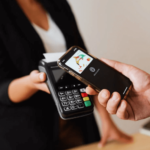Social media has become an essential component of modern communication, enabling users to connect, share, and engage on a global scale. However, these platforms are also prime targets for cybercriminals who exploit vulnerabilities to spread malware, steal personal information, and compromise devices. By understanding how social media malware operates and adopting stringent security measures, individuals can safeguard their personal data and devices from cyber threats.
What is Social Media Malware?
Social media malware refers to malicious software distributed through platforms such as Facebook, Instagram, Twitter, and LinkedIn. Cybercriminals deploy deceptive tactics such as phishing scams, fake links, and malicious attachments to infect devices. Once installed, malware can steal login credentials, financial data, and sensitive information, or even gain control of entire systems.
Common Types of Social Media Malware
1. Phishing Attacks
Phishing schemes deceive users into providing sensitive information through fraudulent messages or links that appear to originate from trusted social media platforms.
Recognizing Phishing Attempts:
- Be cautious of messages that create a sense of urgency and request personal details.
- Verify URLs for inconsistencies or misspellings.
- Avoid clicking on unsolicited links or downloading suspicious attachments.
2. Malicious Links and Fake Contests
Scammers use enticing links, fraudulent giveaways, and viral trends to lure users into clicking malicious URLs that lead to malware infections and data breaches.
Preventive Measures:
- Hover over links to preview their actual destination before clicking.
- Avoid participating in promotions from unverified sources.
- Utilize browser security extensions to block potentially harmful websites.
3. Spyware and Keyloggers
Spyware discreetly records keystrokes, browsing activities, and login credentials, allowing cybercriminals to gain unauthorized access to sensitive accounts.
Protection Strategies:
- Install reputable antivirus and anti-spyware solutions.
- Keep operating systems and applications updated to address security vulnerabilities.
- Enable multi-factor authentication (MFA) for enhanced security.
4. Fake Applications and Plugins
Cybercriminals often distribute malicious applications disguised as games, quizzes, or productivity tools that request excessive permissions to harvest sensitive data.
Preventative Actions:
- Download applications exclusively from verified sources such as the Google Play Store or Apple App Store.
- Review app permissions before installation.
- Remove unnecessary applications that request access to sensitive data.
5. Rogue Browser Extensions
Malicious browser extensions manipulate web sessions, redirect searches, and harvest login credentials.
Security Recommendations:
- Install browser extensions only from reputable developers.
- Regularly audit installed extensions and remove any suspicious ones.
- Keep browsers updated to mitigate security vulnerabilities.
Best Practices for Securing Social Media Accounts
Utilizing Advanced Endpoint Security Solutions
One of the most effective ways to prevent malware infections from social media threats is by using comprehensive endpoint security solutions. These solutions provide real-time protection against malicious activities and prevent unauthorized access to sensitive data.
Recommended Endpoint Security Features:
- AI-driven threat detection to identify and mitigate malware before it spreads.
- Advanced firewall protection to monitor and block suspicious traffic.
- Secure browsing features to prevent malicious link redirections and phishing attempts.
1. Strengthen Password Security
Weak passwords significantly increase the risk of account breaches. Users should employ complex, unique passwords for each social media platform.
Password Best Practices:
- Utilize passwords with at least 12 characters, incorporating a mix of letters, numbers, and symbols.
- Avoid using easily guessable phrases or personal details.
- Employ a password manager to securely store and generate strong passwords.
2. Enable Two-Factor Authentication (2FA)
Two-factor authentication adds an extra layer of security by requiring a secondary verification method in addition to a password.
How to Set Up 2FA:
- Opt for authentication apps like Google Authenticator or Microsoft Authenticator instead of SMS-based authentication.
- Activate 2FA on all major social media platforms.
- Regularly update backup codes and recovery options.
3. Adjust Privacy Settings
Configuring privacy settings appropriately helps restrict the visibility of personal information and interactions.
Privacy Optimization Tips:
- Set profiles to private or limit access to trusted connections.
- Disable location tracking unless necessary.
- Regularly review and manage permissions for third-party applications.
4. Be Wary of Third-Party Applications
Many malware infections originate from third-party apps that request excessive access permissions.
Risk Mitigation Strategies:
- Audit connected applications under account settings and remove those that appear suspicious.
- Revoke access for applications that are no longer in use.
- Be cautious of apps requesting permissions unrelated to their stated functionality.
5. Monitor Account Activity
Frequent reviews of login activity and security logs can help detect unauthorized access early.
Monitoring Best Practices:
- Check social media account activity logs for any unusual logins.
- Log out of accounts when using public or shared devices.
- Enable security alerts via email or SMS for suspicious activities.
6. Update Software and Devices Regularly
Outdated software exposes devices to known security vulnerabilities that hackers exploit.
How to Stay Secure:
- Enable automatic updates for operating systems and applications.
- Keep browsers and security software updated.
- Regularly update mobile applications to mitigate security risks.
7. Enhance Cybersecurity Awareness
Educating oneself and others about evolving cyber threats strengthens digital security awareness and preparedness.
Cybersecurity Awareness Initiatives:
- Follow cybersecurity experts and reputable blogs for security insights.
- Share security best practices with friends, colleagues, and family members.
- Participate in cybersecurity awareness programs and training sessions.
Conclusion
Social media plays a significant role in communication and connectivity, yet it also presents considerable security risks. Implementing robust security measures, staying informed about emerging threats, and leveraging trusted cybersecurity tools can help users safeguard their social media accounts and personal data. By prioritizing digital security, individuals can enjoy safer online interactions while mitigating the risks associated with social media malware.





